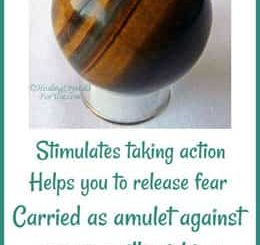
The hoodoo tradition of the American South is another that works with plant energy while often not requiring a patient to ‘take’ a medicine to experience healing.
The word ‘hoodoo’ has African origins, and is used to describe various forms of magic, folk healing, and ‘hexing’, using roots and herbs. Nowadays, the hoodoo practitioner is often referred to as ‘root doctor’ or ‘juju man’. These quaint terms belie the power of the tradition, however, because in Africa, these practitioners were priests (botonons) and sorcerers (azondoto), who were rightly feared and respected for their herbal expertise and knowledge of the spirits and bochio, or soul.
When these priests arrived in America as slaves, they brought their knowledge with them, but the unavailability of some plants meant they had to adopt Native American and even European plant allies and practices in their work. Within modern hoodoo, we therefore see the fusion of many plant magic strands.
One of the best-known forms of this magic is the ‘mojo bag’ – a bundle of plants and consecrated items made to bring luck and protection or to ward off negativity. These are not so different to the offerenda packages, created by Andean shamans as a call to spirits who direct their healing energies towards the person who makes the offering. The word mojo comes from the West African mojuba (“prayer”) – a method of directing spiritual energies to similar effect.
To look at, a mojo is a flannel bag containing magical items, which is usually carried on the person, tucked away out of sight, and often worn next to the skin. If the mojo is intended to protect a property rather than a person, it may also be hidden near the front door. In either case, it is important that no-one sees or touches the bag apart from the person who owns it, or its magic may be lost.
The contents of the bag vary according to its purpose, but typically there are at least three magical objects, whether roots, leaves, feathers, crystals, stones, snake vertebrae, lodestones, metal charms, or papers on which sigils have been drawn or wishes written. Sometimes there are more than three, in combinations that always add up to an odd number.
The reason odd numbers are used differs according to who you ask, but a popular idea is that the universe operates on odd numbers in order to ‘keep things moving’. Three, for example, wants to ‘tumble into’ four, whereas four is ‘solid’ and fixed rather than flowing. To ‘get energy moving’ to the benefit of a client, therefore, or to undo a run of bad luck which seems ‘never-ending’, an odd number is used to signal to the universe that now it is time for a change.
The Jungian psychoanalyst, Marie-Louise Von Franz, also discusses this in her book, The Interpretation of Fairy Tales. Quoting Jung, she remarks that: “three is generally connected with the flow of movement… for movement you need two poles and the exchange of energy between them – for instance, the positive and negative electric pole and the current which equalizes the tension”.
For financial success, for example, an old mojo trick is to wrap High John the Conqueror root in a dollar bill and add frankincense and a little sugar, then tie them all in a green bag. Here, five elements are used: the root, the dollar bill, the frankincense, the sugar, and the bag itself. The symbolism behind these items works in accordance with the plant spirit principle that like attracts like. High John is used to ‘conquer’ money problems; the higher the denomination, the more money will be drawn to the magician or his client. The bag is green because this is the colour of money (‘greenbacks’), and sugar ‘sweetens the pot’.
For a peaceful home, angelica root, olive leaves, rosebuds, lavender flowers, lemon balm and basil leaves are tied into a blue bag (for harmony) along with a few intertwined hairs from all family members. Again we see the doctrine of signatures at play in the choice of angelica (‘angel root’) and balm for spiritual harmony and the leaves of an olive branch for peace.
One more unusual mojo trick is for invisibility. This requires poppy seeds and dried fern leaves to be ground together “beneath a dark moon”. To this are added myrrh, marjoram, slippery elm, and fresh dill, mixed with spring water and almond oil. When it is dry, the mixture can be added to a mojo bag or sprinkled over objects to conceal them from others. The magic in a spell like this, as curandera Doris Rivera Lenz says of her own work, may be to give a client the self-belief that she will not attract attention to herself, so she can navigate her difficulties with more self-confidence, ‘knowing’ that she is unseen. The change, in other words, is to the client and not the external world.
Once it is prepared, a mojo bag is purified in incense and its spirit ‘fed’ with rum or whisky and with Florida Water. Body fluids may also be used, especially if the charm is to influence another. To make a person fall in love with you, for example, it is useful to have a little of her sweat, urine, or saliva to dab onto the bag (other personal items – the closer to her DNA as possible, such as hair or nail clippings – may also be added to the bag itself).
A mojo bag can also be used for divining (as we understand it in the West) by attaching it to a string and using it like a pendulum. By asking the spirit of the charm to show you ‘yes’ (often by spinning clockwise) and ‘no’ (often by rocking backwards and forwards), you have a spiritual device for answers to simple questions.
For more complex questions (for example, ‘How do I make the man I desire fall in love with me?’) it is better to write out the letters of the alphabet and let the pendulum spell out the answer by gravitating to each in turn.
Proudly WWW.PONIREVO.COM
Source by Ross Heaven



